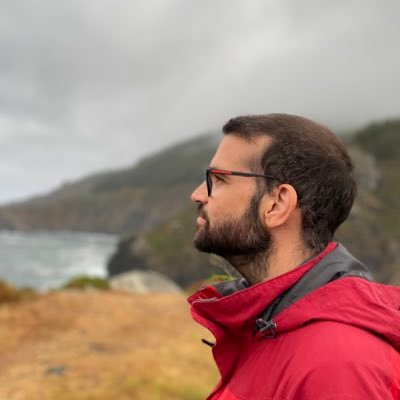
Jake Leyhr
@JakeLeyhr
Followers
321
Following
3K
Media
152
Statuses
527
Postdoc in Sherwood Lab, Duke University. Worms and cell invasion. Previously vertebrate skeletal/craniofacial Evo-Devo PhD Uppsala University. #Embryo23
Durham, NC
Joined March 2018
🚨 Introducing GetVISTA: a python package to massively speed up the sequence and annotation gathering stage of mVISTA conservation analyses (no python experience required). 🚨 https://t.co/Kc1XKSjO4u If you already use mVISTA or are interested in starting, read this 🧵 1/
3
1
6
We end the paper with suggestions for future comparative studies of ICL1 and the function of the OSS. We hope that 3D models like ours will lead to more functional/FEA analyses to understand better the intricacies of fish hearing! 15/15
0
0
0
We also note that, reflective of its anchoring role, rib/vertebra 5 appears like a “transitional vertebra” between the WA and the other thoracic vertebra, bearing in mind that in other species (e.g. catfishes), it is much more heavily modified as part of the WA. 14/
1
0
0
Based on the orientation and composition of ICL1, we argue that it should be included in the category of “Weberian ligaments”, likely functioning to reduce “loose" or "wasted” motion of the OSS and increase the sound sensitivity of the WA. 13/
1
0
0
To my knowledge, this is the first detailed 3D imaging of the triple ligament that tethers together the OSS, tripus, and the anterior face of the swim bladder. 12/
1
0
0
We described the juvenile-adult development of ICL1 along with the other Weberian ligaments, showing they are all mature by 10mm SL. 11/
1
0
0
Histologically, ICL1 closely resembles the interossicular ligament (IOL), with densely packed, taut collagen-1 fibers (unlike the elastin-rich suspensor ligament; SUS), suggesting it strains to hold rib 4/oss in place. 10/
1
0
0
We found that ICL1 bridges features of Weberian and posterior intercostal ligaments, with a unique medial attachment at a steep angle aligned with the os suspensorium (OSS), unlike the slack, flattened posterior ICLs (green). 9/
1
0
0
I wondered if ICL1 could be stabilising the WA, but couldn’t find any mention of this in the literature so we reached out to Nathan Bird, an expert on the WA and its histology, and began the super fun collaboration that led to this paper. 8/
1
0
0
Realising it was an intercostal ligament (ICL1), I segmented more posterior ICLs to compare it with, but ICL1 stood out in terms of shape and orientation as it connected the WA to rib 5. 7/
1
0
0
While I was segmenting the area slice by slice, working in axial/sagittal/coronal views, I noticed a small hint of soft tissue running backwards from the fourth rib, and when I segmented it, I saw that it connected rib 4 to rib 5. 6/
1
0
0
The story begins with our 2023 paper using contrast-enhanced synchrotron scanning to describe soft-tissue defects in zebrafish mutants ( https://t.co/VWwi0y64u5), in which I spent a lot of time segmenting the Weberian apparatus. 5/
frontiersin.org
Detailed histological analyses are desirable for zebrafish mutants that are models for human skeletal diseases, but traditional histological techniques are l...
1
0
0
Since being first described more than 200 years ago, the anatomy and diversity of the WA in Otophysi have been well-characterised. We review this prior work in our paper, but our focus is on describing in detail a ligament that is almost entirely absent from the literature. 4/
1
0
0
The swim bladder functions as a resonating chamber, collecting and amplifying sound waves from the environment, transmitting them through the Weberian ossicles and ligaments to the fluid in the ear, leading to the movement of otoliths and stimulation of auditory hair cells. 3/
1
0
0
The Weberian apparatus (WA) refers primarily to the four heavily modified cervical vertebrae of Otophysan fish (10,000 species) that form a chain of small bones and interconnecting ligaments to connect the swim bladder to the inner ear. 2/
1
0
0
🚨 New(ish 😅) publication alert! 🚨 Out now in the latest issue of the Journal of Anatomy, we described an almost completely overlooked ligament in the Zebrafish Weberian apparatus, and its potential impact on sound transmission 🐟🔊: https://t.co/X0ydimPz08 Let’s dive in! 🧵 1/
onlinelibrary.wiley.com
3D rending of adult zebrafish Weberian apparatus in association with the occiput, swim bladder, and rib-bearing vertebrae, with highlighted interossicular, suspensor, and intercostal ligaments.
1
1
4
It was awesome to play a small part in this project during #Embryo23, check out the paper for more beautiful fluorescent tardigrade pics!
Happy to share protocols for live staining #tardigrades, now out at @STARProtocols! Studying a phylum with limited experimental tools is a challenge. Hopefully these protocols will aid others in visualizing subcellular structures in tardigrades!
0
1
20
Happy to share protocols for live staining #tardigrades, now out at @STARProtocols! Studying a phylum with limited experimental tools is a challenge. Hopefully these protocols will aid others in visualizing subcellular structures in tardigrades!
star-protocols.cell.com
STAR Protocols is an open access, peer-reviewed journal from Cell Press. We offer structured, transparent, accessible, and repeatable step-by-step experimental and computational protocols from all...
1
8
27
It’s finally out! 🥳 Today @cellcellpress we report non-mineral fossils of ancient chromosomes in skin from a woolly mammoth that died in Siberia, 52,000 years ago. 🦣💨 Don’t miss our thread below! 🧵👇🏽
39
642
3K
Try it out, and if you have any feedback about bugs or features you’d like to see added, please let me know! 11/11
0
0
0
There are other modules and options for searching for specific genomic coordinates rather than a gene name and for querying GenBank instead of Ensembl, and you can find the full details explained in the README: https://t.co/xLRFoCV2fQ 10/
github.com
Query Ensembl and GenBank to obtain genomic information in VISTA format - jakeleyhr/GetVISTA
1
0
0




